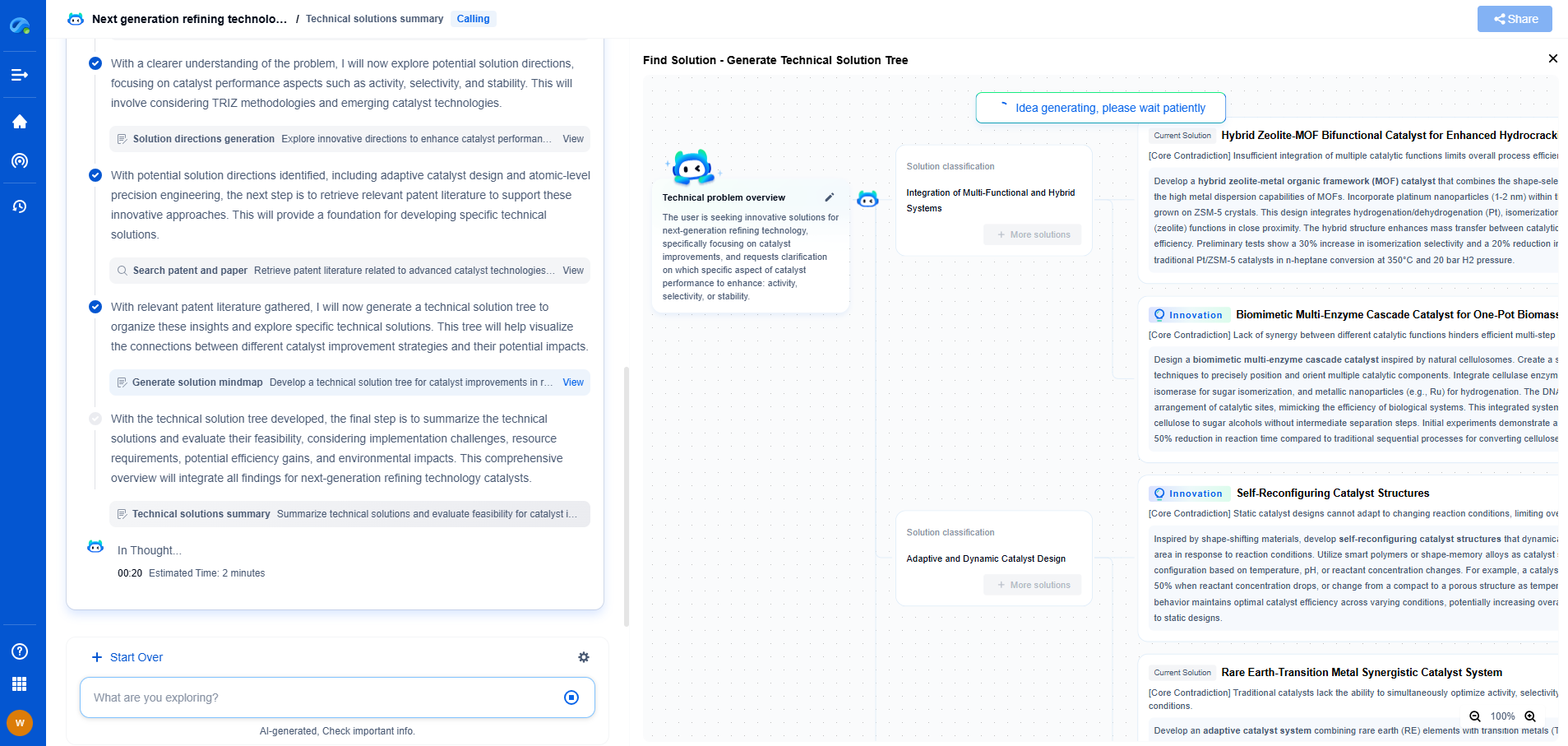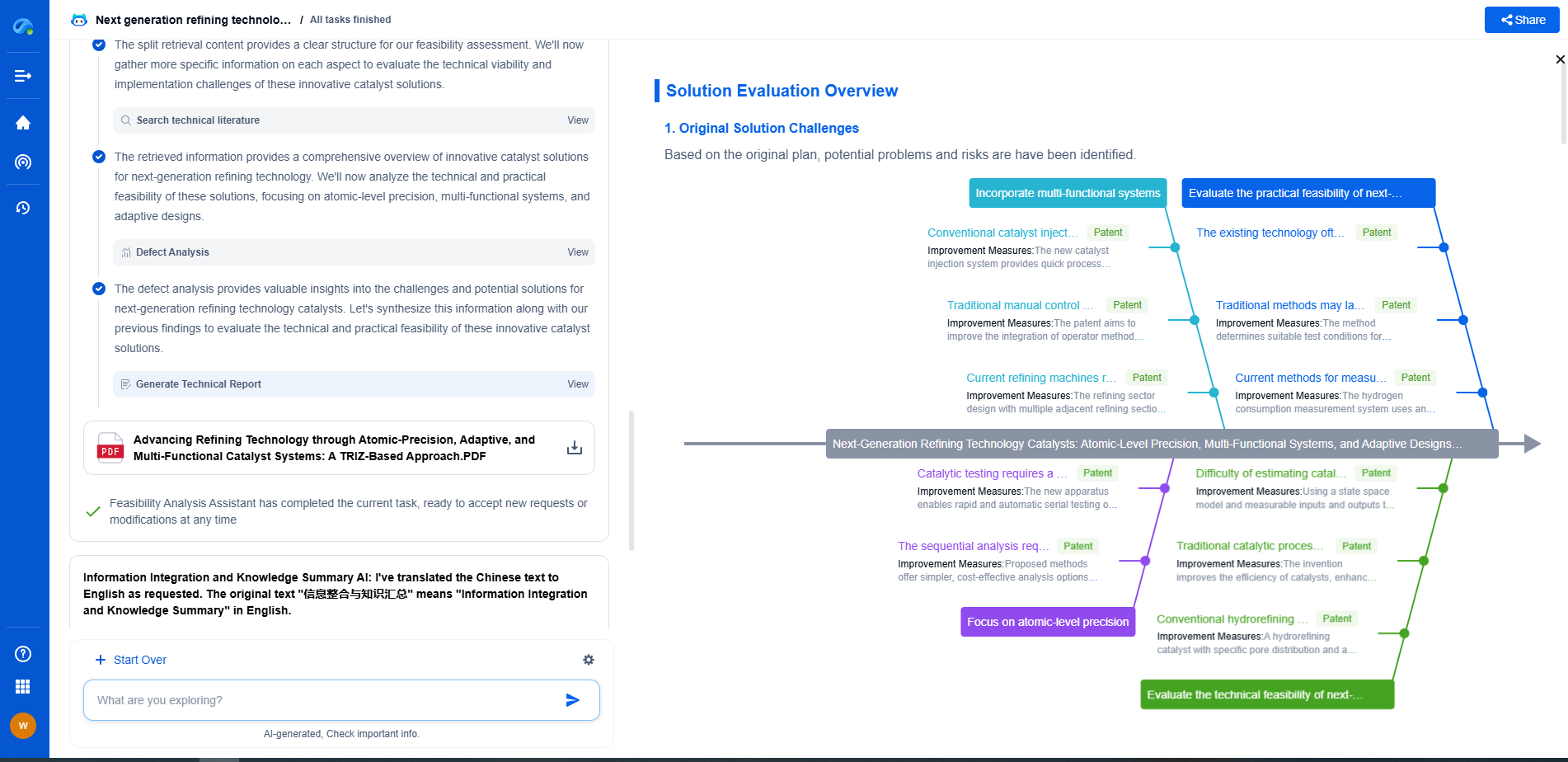Permanent Magnet Generators vs. Induction Generators in Wind Energy
JUN 26, 2025 |
The wind energy sector has witnessed remarkable advancements over the past few decades, with various types of generators playing a pivotal role in harnessing this renewable resource. Among these, Permanent Magnet Generators (PMGs) and Induction Generators (IGs) are the most commonly used in modern wind turbines. Both have distinct operational principles, advantages, and disadvantages, raising the question: which is better suited for wind energy applications?
Understanding Permanent Magnet Generators
Permanent Magnet Generators utilize permanent magnets to create a magnetic field. This eliminates the need for external excitation, allowing them to convert mechanical energy into electrical energy efficiently.
Advantages of Permanent Magnet Generators
One of the primary benefits of PMGs is their high efficiency. As they do not require additional power sources for excitation, energy losses are minimized, translating to higher overall efficiency. This can be particularly advantageous in low-wind conditions, where maximizing energy capture is crucial.
Additionally, PMGs are known for their reliability and low maintenance requirements. With fewer moving parts and no slip rings or brushes, they tend to have a longer operational lifespan. This can result in reduced maintenance costs over time, making them an attractive option for remote or offshore wind installations where maintenance can be challenging and costly.
Furthermore, PMGs offer better performance at variable speeds, a critical aspect of wind energy capture. By efficiently handling variable wind speeds, PMGs can produce a more consistent power output, improving the overall reliability of the wind turbine.
Disadvantages of Permanent Magnet Generators
Despite their advantages, PMGs come with certain limitations. One major drawback is the high cost of permanent magnets, particularly those made from rare earth elements. This can significantly increase the initial investment required for PMG-based wind turbines.
Moreover, the availability and environmental impact of mining rare earth materials raise concerns about the long-term sustainability of PMGs.
Exploring Induction Generators
Induction Generators, also known as asynchronous generators, are widely used in wind energy applications due to their simplicity and robustness. They rely on electromagnetic induction to generate electricity, requiring an external power source for excitation.
Advantages of Induction Generators
IGs are praised for their simplicity and ruggedness. With a straightforward design and fewer components, they are typically easier and cheaper to manufacture compared to PMGs. This makes them a cost-effective option for many wind energy projects.
Another significant advantage is their ability to withstand short-term overloads. This characteristic makes IGs well-suited for regions with sporadic high-wind events, where the generator may need to handle sudden spikes in power output.
Induction Generators are also adaptable to grid-connected applications, as they can operate both as generators and motors, depending on the need. This flexibility can be beneficial in certain wind farm configurations.
Disadvantages of Induction Generators
However, IGs are not without their challenges. They generally have lower efficiency compared to PMGs due to the need for external excitation, leading to higher energy losses. This can be a significant drawback in low-wind scenarios, where every fraction of captured energy counts.
Additionally, IGs have higher maintenance requirements, primarily due to the presence of slip rings and brushes, which are subject to wear and tear. This can result in increased operational costs over the lifespan of the wind turbine.
Comparative Analysis: PMGs vs. IGs
When comparing PMGs and IGs, several factors come into play. The choice between the two largely depends on specific project requirements, including budget, location, and expected wind conditions.
PMGs, with their higher efficiency and lower maintenance needs, might be more suited for offshore wind farms or remote locations where maintenance access is limited. On the other hand, IGs, with their lower initial costs and robustness, could be more appropriate for onshore farms where maintenance is more manageable and cost control is a priority.
Furthermore, advances in technology are continually shifting the balance between these two types of generators. For instance, the development of cheaper and more sustainable permanent magnet materials could address some of the cost and environmental concerns associated with PMGs.
Conclusion
Permanent Magnet Generators and Induction Generators each have their unique strengths and weaknesses, making them suitable for different wind energy applications. The decision to use one over the other depends heavily on specific project goals, financial considerations, and environmental factors. As technology continues to evolve, both types of generators are likely to see enhancements that will further influence their roles in the future of wind energy.
Empower Your Wind Power Innovation with AI
In the fast-evolving landscape of wind turbine technology—where aerodynamic optimization, generator efficiency, and structural innovation are critical—staying ahead requires more than just expertise. It requires intelligent tools that accelerate R&D and protect your competitive edge.
Patsnap Eureka is your AI-powered research assistant, designed specifically for innovators like you working at the forefront of Wind Motors. Whether you're analyzing blade design trends, exploring novel gearbox architectures, or navigating complex global patent landscapes, Eureka streamlines the entire process with precision and speed.
👉 Experience how Patsnap Eureka can revolutionize your R&D and IP strategy. Request a demo today and power up your next breakthrough.
- R&D
- Intellectual Property
- Life Sciences
- Materials
- Tech Scout
- Unparalleled Data Quality
- Higher Quality Content
- 60% Fewer Hallucinations
Browse by: Latest US Patents, China's latest patents, Technical Efficacy Thesaurus, Application Domain, Technology Topic, Popular Technical Reports.
© 2025 PatSnap. All rights reserved.Legal|Privacy policy|Modern Slavery Act Transparency Statement|Sitemap|About US| Contact US: help@patsnap.com

